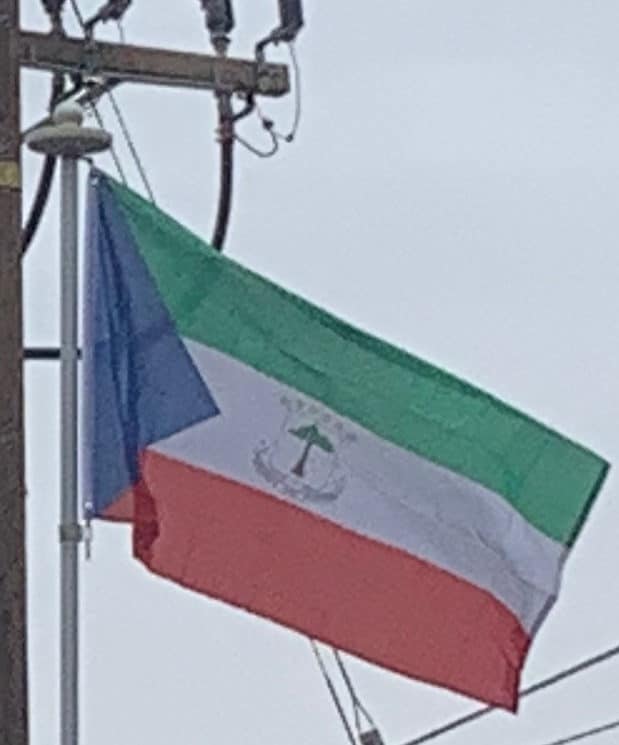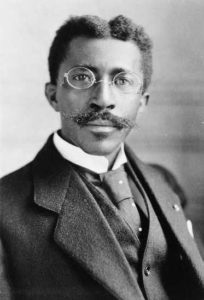
The greatest constraint to economic development was a chronic shortage of labour. Pushed into the interior of the island and decimated by alcohol addiction, venereal disease, smallpox, and sleeping sickness, the indigenous Bubi population of Bioko refused to work on plantations. Working their own small cocoa farms gave them a considerable degree of autonomy.
By the late nineteenth century, the Bubi were protected from the demands of the planters by Spanish Claretian missionaries, who were very influential in the colony and eventually organised the Bubi into little mission theocracies reminiscent of the famous Jesuit reductions in Paraguay. Catholic penetration was furthered by two small insurrections in 1898 and 1910 protesting conscription of forced labour for the plantations. The Bubi were disarmed in 1917, and left dependent on the missionaries. Serious labor shortages were temporarily solved by a massive influx of refugees from German Kamerun, along with thousands of white German soldiers who stayed on the island for several years.
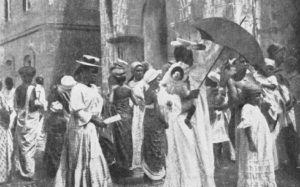
Between 1926 and 1959 Bioko and Rio Muni were united as the colony of Spanish Guinea. The economy was based on large cacao and coffee plantations and logging concessions and the workforce was mostly immigrant contract labor from Liberia, Nigeria, and Cameroun. Between 1914 and 1930, an estimated 10,000 Liberians went to Fernando Po under a labor treaty that was stopped altogether in 1930.
With Liberian workers no longer available, planters of Fernando Po turned to Rio Muni. Campaigns were mounted to subdue the Fang people in the 1920s, at the time that Liberia was beginning to cut back on recruitment. There were garrisons of the colonial guard throughout the enclave by 1926, and the whole colony was considered ‘pacified’ by 1929.
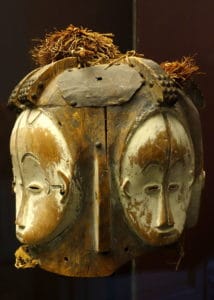
The Spanish Civil War had a major impact on the colony. 150 Spanish whites, including the Governor-General and Vice-Governor-General of Río Muni created a socialist party called the Popular Front in the enclave which served to oppose the interests of the Fernando Pó plantation elite. When the War broke out Francisco Franco ordered Nationalist forces based in the Canaries to ensure control over Equatorial Guinea. In September 1936 Nationalist forces backed by Falangists from Fernando Pó, in a mirror of what happened in Spain proper ‘cleansed’ Río Muni, which under Governor-General Luiz Sanchez Guerra Saez and his deputy Porcel had backed the Republican government. By November the Popular Front and its supporters had been defeated, its leaders executed and Equatorial Guinea secured for Franco. The commander in charge of the occupation, Juan Fontán Lobé was appointed Governor-General by Franco and began to exert more effective Spanish control over the enclave interior.
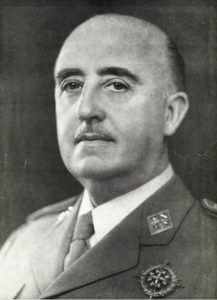
Rio Muni had a small population, officially a little over 100,000 in the 1930s, and escape across the frontiers into Cameroun or Gabon was very easy. Also, the timber companies needed increasing numbers of workers, and the spread of coffee cultivation offered an alternative means of paying taxes. Fernando Pó thus continued to suffer from labor shortages. The French only briefly permitted recruitment in Cameroun, and the main source of labor came to be Igbo smuggled in canoes from Calabar in Nigeria. This resolution to the worker shortage allowed Fernando Pó to become one of Africa’s most productive agricultural areas after the Second World War.
Final Years of Spanish Rule (1945–1968):
Politically, post-war colonial history has three fairly distinct phases: up to 1959, when its status was raised from ‘colonial’ to ‘provincial’, following the approach of the Portuguese Empire; between 1960 and 1968, when Madrid attempted a partial decolonisation aimed at keeping the territory as part of the Spanish system; and from 1968 on, after the territory became an independent republic. The first phase consisted of little more than a continuation of previous policies; these closely resembled the policies of Portugal and France, notably in dividing the population into a vast majority governed as ‘natives’ or non-citizens, and a very small minority (together with whites) admitted to civic status as emancipados, assimilation to the metropolitan culture being the only permissible means of advancement.
